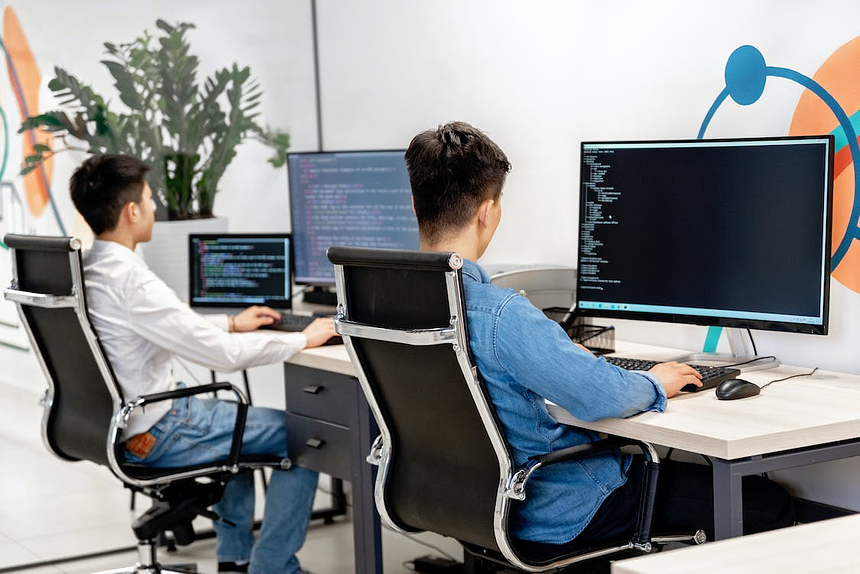Differences between iOS and Android Development
Engineers and developers must choose between iOS and Android when developing an app. While both systems have many architectural and functional similarities, they are significantly different in terms of development and maintenance.
Our iOS and Android app development experts have compared the two operating systems to help you make an informed decision. Keep reading to find out.
Programming Languages
Android and iOS app development uses different programming languages. iOS uses Swift proprietary language, whereas Android relies on Java or Kotlin (as an improved alternative).
Coding with Swift is a lot easier than with Java. It requires less time, has high readability, and offers a lot of conveniences to programmers. On the other hand, with Java, Android app developers have to write lengthy and complex code to create an app. That's why developers had to introduce Kotlin as an alternative to Java. This language is modern, easy to read, and intuitive, and more upgrades are expected in the future.
However, currently, iOS development has an easier programming language with a shorter learning curve.
Integrated Development Environment (IDE)
The second major difference between Android and iOS development is their Integrated Development Environments.
iOS developers utilize a proprietary XCode tool that supports all iOS devices, offers many bug-fixing tools, and is user-friendly. Android developers rely on Google's Android Studio. This IDE has high readability, cross-platform support, and several debugging and development features.
Both IDEs have their pros and cons, so no matter which app you choose to develop, it won't be a problem to specialize in any of the development environments.
Design Philosophies
The differences between Android and iOS design philosophies mainly lie in architecture and navigation. iOS app architecture uses view controllers such as tab, page view, split view controllers, etc. View controllers allow controlling the entire screen or its individual parts.
As a developer, you'll get several options to manage controllers, such as organizing images in a storyboard and storing it as an XML file or writing them directly in code. These techniques have little room for errors and increased development pace.
Android apps use the "partition" technique for development, where a coding team breaks the app into activities and fragments. An activity is equal to one app screen, so you'll be managing multiple activities if your project consists of multiple screens. You'll use fragments to navigate between these activities. These fragments are parts of a user interface that allows developers to enter a value, open new app screens, or navigate between them.
Due to the complexity of handling multiple screens and fragments, the Android architecture is prone to errors. The iOS architecture is much more manageable with fewer errors.
Development Complexity
iOS has a limited range of devices, so you have to look after a small range of screen dimensions as a developer. However, that's not the case with Android because it has dozens of devices, each with a different screen style, size, density, and OS version. You have to adjust the app's graphics to the complete range of devices and use several simulators during the software testing stage.
Overall, the testing and development stages for Android development require many reviews and iterations, consuming a lot of time and resources. Therefore, the development complexity for iOS apps is much easier to handle.
If you need help with your app development process, you can count on Xpeer. It's an AI-backed Intelligent B2B Cloud platform that helps you connect to other businesses and web developers. You can also find leading software testing companies for your app and many other solutions. Reach out to our team for details.








